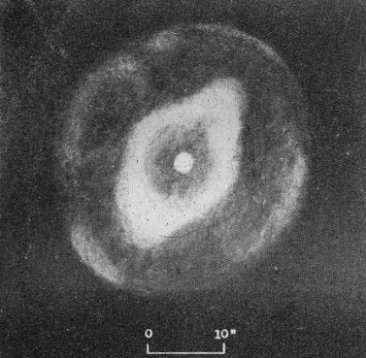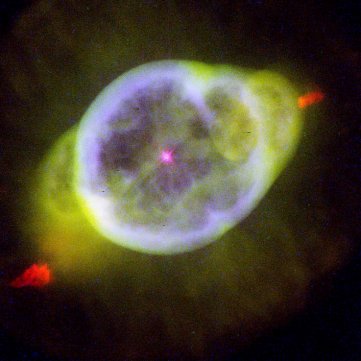NGC 3242
THE GHOST OF JUPITER
For some odd reason, this planetary
nebula reminded older observers of the planet Jupiter. The
contrast between the two pictures, Curtis's century-old drawing and
the Hubble, is a curious one. Hubble shows the usual extraordinary
detail in the central ring and the shooting bipolar flow, which
Curtis could not really see. Curtis, however, captured the outer
halo or ring, which is only marginally present on the Hubble image,
probably the result of short exposure time. Otherwise, we have an
object that looks very much like NGC 7662
and a variety of others, in which the inner ring looks as if it has
been snowplowed in the ejected gas by a hot fast wind from the
central star.
There is a reasonable distance of 1600 light years found by
comparing the angular expansion with the expansion velocity of just
under 30 kilometers per second. The bright 12th magnitude (12.1)
central star, with a temperature of 90,000 Kelvin, then shines with
the total light of around 1000 Suns. Given
that distance, the inner ring stretches to a maximum of around half
a light year wide, the outer somewhat farther.
As a curious historical note, NGC 3242 was once thought to be the
only planetary nebula radiating "non-thermal" radio radiation
(radiation not produced by heat), perhaps from strong magnetic
fields. It was just a coincidence, as the radiation from the
nebula was confused with a distant background object that was
indeed so radiating.
Left: Image by H. D. Curtis from Publications of the Lick
Observatory, Volume 13, Part III, 1918. Right: Bruce Balick and
Jason Alexander (U. of Washington), Arsen Hajian (U.S. Naval
Observatory), Yervant Terzian (Cornell U.), Mario Perinotto (U. of
Florence), Patrizio Patriarchi (Arcetri Obs), and NASA/ESA.



